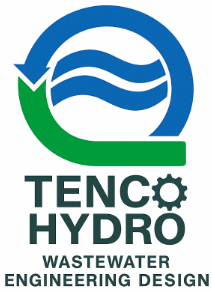Wastewater Treatment, Perfected
Increasing Sludge Tank Capacity - Maximizing Efficiency & Cost Savings
Why Upgrade Your Sludge Tank?
Optimal DAF pH: 6.5-8.5
Expanding the sludge tank size improves operational efficiency, reduces disposal costs, and minimizes process interruptions. A larger sludge tank allows for longer retention times, reducing the frequency of sludge removal and optimizing DAF system performance.
✅ Up to 75% Cost Reduction – Fewer tanker visits mean significant savings on transportation and disposal fees.
✅ Improved Efficiency – Less frequent sludge removal minimizes process disruptions and frees up staff for higher-priority tasks.
✅ Sustainable Operations – Fewer truck trips reduce fuel consumption, CO₂ emissions, and environmental impact.
✅ Enhanced Thickening & Dewatering – More storage allows for better sludge thickening, reducing the volume of waste for disposal.
Installation Made Easy
🛠 Average Install Time: 2-3 Days – Quick and efficient setup minimizes operational impact.
🚧 No Downtime Install Procedure – The system remains online while the tank upgrade is completed.
By increasing sludge tank capacity, DAF systems can handle higher loads, reduce operating costs, and improve sustainability—a simple yet high-impact upgrade for long-term efficiency! 🚀
Turbidity Sensors - Real-Time Effluent Monitoring
Optimal Turbidity: <10 NTU (for regulatory compliance)
Turbidity sensors measure the amount of suspended solids in water by detecting how much light is scattered by particles. This provides a direct indication of DAF separation efficiency.
✅ Ensures Compliance – Monitors turbidity in real-time to maintain discharge limits (<10 NTU for many industries) and prevent violations.
✅ Prevents Process Upsets – Detects sudden spikes in turbidity, indicating issues like poor coagulation, air saturation problems, or excessive scum buildup.
✅ Automated Process Adjustments – Integrates with chemical dosing and skimmer controls to optimize separation when turbidity levels fluctuate.
✅ Reduces Chemical Waste – Avoids overdosing of coagulants and polymers by ensuring just the right amount of treatment is applied.
Optical Sensors - Confirm Your Solids and Water Clarity
Coagulant dosing adjustment at TSS > 50 mg/L
Optical Sensors use light-based detection to monitor bubble formation, sludge interface levels, and solids concentration.
✅ Optimized Air-to-Solids Ratio – Ensures proper microbubble distribution by monitoring air injection and dissolved air concentration.
✅ Accurate Sludge Blanket Measurement – Detects sludge accumulation and interface levels, preventing excessive sludge carryover or under-removal.
✅ Prevents Effluent Contamination – Identifies floating solids or scum overflow, allowing for quick corrective action.
✅ Improves Skimmer and Pump Efficiency – Provides real-time feedback to adjust skimmer speed, sludge pump activation, or chemical dosing for optimal performance.
